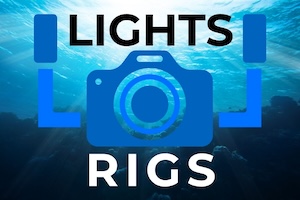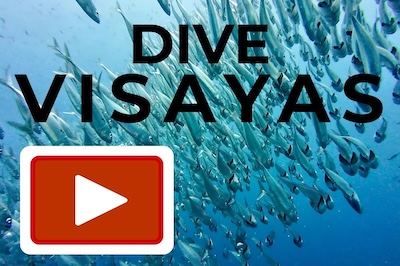
Best Underwater Cameras for Diving (2025): DJI Osmo Action 5 vs Olympus TG-7
Choosing the best underwater camera for diving in 2025 often comes down to two stand-out options — the DJI Osmo Action 5 and the Olympus TG-7. With today’s market offering such a wide range of models, it can feel overwhelming to know where to start. In reality, the choices are far fewer than they first appear. Once you set aside the high-end professional rigs with interchangeable lenses, bulky housings, and complex setups, you’ll find there are only a handful of cameras that genuinely work for recreational divers.
For me, underwater photography and videography has become an essential part of every dive trip. I enjoy the whole process — from capturing shots to experimenting with techniques, editing, and sharing. Most divers I meet on the boats share that same enthusiasm, and this inclusiveness has been driven in large part by the rise of action cameras, which have sparked change and innovation across the whole industry.

The key to better photos and videos - Getting set-up with a good rig and lighting system makes the difference.
If you’re choosing an underwater camera for scuba, this guide compares the DJI Osmo Action 5 and the Olympus TG-7 with real dives in mind—sensor size, stabilization, field of view, macro ability, housings, and total cost—so you know exactly which setup fits your style.
Dive the Visayas Live
Want to see what diving in the central Philippines is really like? On my YouTube channel I post regular clips from sites around Bohol, Leyte, and beyond — showing the reefs, conditions, and marine life as they are, so you know what to expect on your own trip.

Watch real dive footage from sites across the central Visayas on YouTube.
In Focus - Dive Guides & Dive Trips
Whether you're planning a short visit or a longer journey, these resources will help you choose the best dive sites and travel routes.

Built on personal experience, this hub covers key dive sites, seasonal insights, filming tips, and trusted local knowledge.

Exploring Bohol as a dive location, the Panglao, Balicasag, Pamilacan, Anda and Cabilao, Itinerary

Wide Angle or Macro: Make Your Choice
I now use the DJI Osmo Action 5 with its waterproof case, after previously diving with the Osmo Action 4. The Action 5, with its 1/1.3" sensor, delivers excellent low-light performance, supports up to 4K/120fps recording, and offers a 155° ultra-wide field of view. Combined with DJI's color temperature sensor and advanced stabilization system, it captures expansive underwater environments and dynamic reef scenes with ease.
I have been diving with both the DJI Osmo Action 4 and Action 5 since October 2023, completing hundreds of dives with them. Their compact size makes them easy to live with, they don’t overheat, and they remain simple to operate underwater. To this day, neither has ever let me down, and both continue to deliver excellent results on every dive.
But is it everything I want and the answer to that is no. With its fixed lens it has a focus range from 0.4m (1.3 feet) to infinity. Any closer to the subject will become soft or blurry — and in the world of macro photography, where divers love capturing tiny critters like nudibranchs, the limitation of action cameras quickly becomes apparent.
When it comes to underwater macro photography at our level, one camera stands out — the Olympus TG-7. Of all the cameras I see on dives, this one dominates, thanks to its ability to focus extremely close, capture sharp detail of tiny critters, deliver great results, and benefit from a wide ecosystem that includes dedicated dive housings and lens add-ons.
So should we all rush out and purchase a TG-7? Whilst this camera can focus from 1 cm to infinity, its lens make-up limits its wide-angle field of view to around 70°, resulting in cramped or cut-off scenes when trying to capture large reef walls, wrecks, or schools of fish. This is why, despite its dominance in macro, the TG-7 often falls short for big underwater landscapes unless paired with a dome port or wide-angle wet lens.
DJI Osmo Action 4 vs Olympus TG-7
This table sets out the main differences between the two cameras, focusing on the features that matter most underwater — sensor size, stabilization, field of view, and focus distance — and also includes cost, so you can see the full picture of performance and price side by side.
| Feature | DJI Osmo Action 4/5 | Olympus / OM System TG-7 | Comments |
|---|---|---|---|
| Sensor Size | 1/1.3-inch CMOS (~81 mm²) | 1/2.3-inch BSI-CMOS (~28 mm²) | Action 4’s larger sensor gives cleaner low-light and wide-scene results. |
| Stabilization | RockSteady 3.0 + HorizonSteady (video focus) | In-body sensor-shift IS (~2.5 stops) | Action 4 excels at smooth reef video; TG-7 stabilization helps handheld macro stills. |
| Field of View (FOV) | 155° ultra-wide (ideal for seascapes) | 25 mm equiv = ~97° in air → ~70° underwater (flat port) | TG-7 feels cropped underwater unless paired with a dome or wet wide lens. |
| Minimum Focus Distance | ~0.4 m (1.3 ft) | 1 cm (Microscope Mode) | Action 4 can’t do true macro; TG-7 dominates with nudibranchs & tiny critters. |
| Camera Price | ~USD $250 (Action 5 - $450) | ~USD $550 | Action 4 is far cheaper upfront. |
| Waterproof Housing | Official 60 m Case: ~USD $90 | PT-059 Housing: ~USD $350 | TG-7 housing adds significant extra cost. |
| Total Entry Cost (Camera + Housing) | ~USD $340 (Action 5 - $540) | ~USD $900 | Action 4 setup is nearly one-third the cost of a TG-7 setup. |
Note: Pricing is approximate and may vary by region and retailer. Figures are included here only to give a broad comparison between the two setups.
Compromise & Options
We have considered two solid options for underwater photography and videography, but due to the inherent trade-offs between wide angle and macro, neither camera is perfect on its own. So do we really need to make a choice and accept the compromise? Let’s look at the options.

Wide or Macro — or Maybe Not
Including original equipment manufacturer (OEM) add-ons such as waterproof cases, the market is also full of third-party accessories—especially in the action camera segment. GoPro, in particular, offers a wide range of options including dome ports, filters, and lens mods, all designed to bridge the gap between wide-angle and macro shooting. For the TG-7, most wide-angle solutions come from the third-party market, with brands like Backscatter providing true wide-angle capability for the system.
Costs can climb quickly, particularly with the TG-7, and many action-camera add-ons feel awkward or more like a marketing afterthought. So where does this leave us? Underwater photography and videography is as much about light as it is about gear, and if you want to grow, the best path is to understand your camera’s limits and focus your investment on rigs and lighting. The difference that good lighting makes is night and day—whether you’re shooting macro, wide, or anywhere in between.
Get Closer to Light & Colour

Light and colour underwater — what happens, and how to film it right.

Frequently Asked Questions
Is the DJI Osmo Action 4 good for underwater videography?
Yes. The DJI Osmo Action 4 performs very well underwater when paired with its official 60 m waterproof case. It has a larger sensor than most compact cameras in this class, excellent stabilization, and a 155° wide field of view that makes it great for reefs and big scenes. Its main limitation is macro work, as it cannot focus closer than about 0.4 m.
Why do divers use the Olympus TG-7 for macro shots?
The TG-7 can focus as close as 1 cm in Microscope Mode, which makes it perfect for photographing nudibranchs, shrimp, and other tiny critters. It produces sharp results at close range and has strong support for underwater housings and add-on lenses. Its limitation is wide-angle scenes, as its field of view narrows to around 70° underwater without a dome or wide lens.
What are the main trade-offs between the DJI Osmo Action 4 and TG-7?
The Action 4 excels in wide-angle video and low-light performance at a lower price point, but it struggles with macro. The TG-7 dominates in macro photography and fine detail but feels cropped for wide scenes and is more expensive once you add the housing. Neither camera is perfect, which is why many divers choose based on their shooting priorities.
Do I need add-ons for underwater cameras?
Add-ons can expand what a camera can do. For action cameras like the Osmo or GoPro, dome ports, filters, and lens mods help with wide-angle shots and color correction. For the TG-7, wide-angle wet lenses from third-party brands like Backscatter are common. However, costs add up quickly, so many divers invest first in good lighting, which improves results across both macro and wide.
Is lighting more important than camera choice underwater?
Yes. While choosing the right camera matters, underwater photography and videography are as much about light as about gear. Proper video lights or strobes bring back color and contrast lost at depth. Even the best camera will look flat without lighting, while modest setups can produce excellent results with strong, well-placed lights.

Get to Know the Philippines
If you want a real sense of life here — or you’re simply curious about the people and culture that make these islands unique — explore our in-depth guides.
Filipino Society

Explore what shapes life in the Philippines — from culture and history to family, faith, and the systems that guide daily living.

How power works in the Philippines — from national institutions to barangay halls, and what it means for expats.
Living in the Philippines

Everything you need to build a life in the Philippines.

Learn how to manage your prescriptions as an expat — what to bring, what’s available locally, and how to plan for emergencies.
Back to Top
